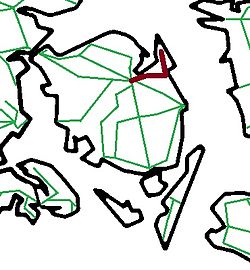Odense – Kerteminde – Martofte railway line
| Odense – Kerteminde – Martofte | |||||||||||||||||||||||||||||||||||||||||||||||||||||||||||||||||||||||||||||||||||||||||||||||||||||||||||||
|---|---|---|---|---|---|---|---|---|---|---|---|---|---|---|---|---|---|---|---|---|---|---|---|---|---|---|---|---|---|---|---|---|---|---|---|---|---|---|---|---|---|---|---|---|---|---|---|---|---|---|---|---|---|---|---|---|---|---|---|---|---|---|---|---|---|---|---|---|---|---|---|---|---|---|---|---|---|---|---|---|---|---|---|---|---|---|---|---|---|---|---|---|---|---|---|---|---|---|---|---|---|---|---|---|---|---|---|---|---|
|
Odense-Kerteminde-Martofte Jernbane
| |||||||||||||||||||||||||||||||||||||||||||||||||||||||||||||||||||||||||||||||||||||||||||||||||||||||||||||
| Route length: | 35.6 km | ||||||||||||||||||||||||||||||||||||||||||||||||||||||||||||||||||||||||||||||||||||||||||||||||||||||||||||
| Gauge : | 1435 mm ( standard gauge ) | ||||||||||||||||||||||||||||||||||||||||||||||||||||||||||||||||||||||||||||||||||||||||||||||||||||||||||||
| Maximum slope : | 8.3 ‰ | ||||||||||||||||||||||||||||||||||||||||||||||||||||||||||||||||||||||||||||||||||||||||||||||||||||||||||||
| Minimum radius : | 628 m | ||||||||||||||||||||||||||||||||||||||||||||||||||||||||||||||||||||||||||||||||||||||||||||||||||||||||||||
| Operating points and routes | |||||||||||||||||||||||||||||||||||||||||||||||||||||||||||||||||||||||||||||||||||||||||||||||||||||||||||||
|
|||||||||||||||||||||||||||||||||||||||||||||||||||||||||||||||||||||||||||||||||||||||||||||||||||||||||||||
The Odense – Kerteminde – Martofte line - or Kertemindebanen in Danish - was a Danish private railway on the island of Funen . The Odense – Kerteminde – Martofte Jernbane (OKMJ) company emerged from the Odense – Kerteminde – Dalby Jernbane (OKDJ) when the line from Dalby to Martofte was extended.
Odense – Kerteminde – Dalby Jernbane
The Great Railroad Act of May 8, 1894 included a railway line from Kerteminde to Odense or Ullerslev and possibly a section from Kerteminde to Dalby. The license was granted on May 6, 1896 . Construction of the line began in the spring of 1898. It began at Odense station, where its own depot and workshops were built.
The 31.6 km stretch between Odense and Dalby was inaugurated on April 5, 1900. Rails with a meter weight of 17.5 kg were used, the maximum gradient was 8.3 ‰ and with the exception of a few places in Kerteminde and Dalby the smallest curve radius was set at 628 m.
The vehicles had to be light in these conditions. For example, A / S Vulcan, CF Kiehn in Maribo delivered two small 1 B-coupled tank locomotives , five passenger / mail cars and ten freight cars for the opening . A further 14 cars were delivered from factories in Germany and Belgium . After the opening, four trains ran daily in each direction.
From October 1, 1903, the company had joint management with Sydfyenske Jernbaner until it was taken over by Danske Statsbaner on April 1, 1949.
Odense – Kerteminde – Martofte Jernbane
The extension of the line between Dalby and Martofte (4.0 km) was put into operation on February 26, 1914. The total length was 35.6 km.
business
The railway had joint operations management with Nordfynske Jernbane until October 1, 1903. Det Sydfyenske Jernbaneselskab (SFJ) then took over operational management. Since this company was transferred to the state from April 1, 1949, OKMJ took over management together with Brenderupbane (OMB).
In 1954 a large new locomotive shed was built in Odense, which was shared with DSB. The three coal bans remained, which were owned by DSB, Nordfynske Jernbane and OMB / OKMJ. At that time, the latter two had joint operations management and since 1954 a joint workshop. Another engine shed was available in Martofte.
From July 1, 1962, Nordfynske Jernbane rejoined the joint administration. From this point on, the three routes had a common depot and shared their hub with the DSB .
The route, which ran through an agricultural area, mainly carried agricultural products. Agriculture. The industrial companies in Kerteminde were also customers. The traffic was not insignificant and in the last few years of existence it developed into a suburban railway of Odense. Due to the poor administration, which worked very conservatively in the procurement of vehicles and in maintenance, ultimately led to the line being closed.
For the last year before hiring, the staff struggled to even operate the trains. The vehicles were completely worn out and there was always too little staff to operate. Therefore, in the last few years of operation, vehicles lent by DSB and the associated state railway personnel often had to take over the trains on the route. With the shutdown of OKMJ, OMB and NFJ at the same time, Odense and Fyn missed a good foundation for future traffic development.
The line was closed on March 31, 1966.
Special train stations
- Bullerup trinbræt: connecting railway to the gravel pit of the railway company. In 1907 it was converted into a ticket sales point (in Danish: Billetsalgssted ) and given a small terminal building
- Trellerup trinbræt with private loading siding, from May 1, 1932 public loading siding with expedition from Dræby
- Revninge had a stable for transporting cattle
- Kerteminde with turntable, water tower and engine shed for the shunting tractor
- Tårup trinbræt, from August 27, 1930 loading platform with expedition from Mesinge
- Dalby with private goods shed and stable for cattle transport. When the railway was extended in 1914, the tracks were moved from the west side of the station building to the east side
- Hersnap trinbræt with loading platform and expedition from Dalby
- Kirkebro trinbræt was in the village of Stubberup
- Martofte with engine shed, turntable, coal barn and water crane
( trinbræt : Danish name for a stop or a stop, some with a loading platform )
The station buildings except in Martofte and Bullerup were designed by the chief architect of the DSB, Heinrich Wenck . The buildings in Agedrup and Kerteminde were demolished.
Web links
- Erik V. Pedersen: Odense – Kerteminde – Martofte Jernbane. In: EPP. Retrieved December 6, 2016 (Danish).
- Odense – Kerteminde – Martofte Jernbane (Kertemindebanen). In: jernbanen.dk. Retrieved December 6, 2016 (Danish).
Individual evidence
- ↑ T. Rithmester: railway stations in Denmark. Retrieved December 6, 2016 (Danish).

